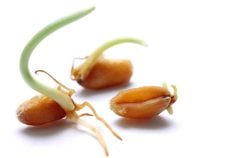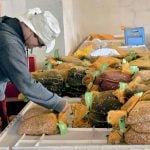Market watchers say falling calf prices have accelerated the cattle cycle in the United States.
The U.S. department of agriculture released its semi-annual inventory report of cattle and calves last week and caught most in the sector off guard.
Analysts polled before the report was made public estimated cattle supplies would increase to 105 million head in the U.S. as of Jan. 1.
Instead, USDA counted 103.8 million head, about two percent less than anticipated, but still bigger than the 102.7 million head recorded Jan. 1, 1995.
Read Also

More factors affecting winter weather
When you combine a weak La Niña, early Siberian snow, and a warm northern Pacific, it’s easy to see why long-range winter forecasting is so complex.
And in a market that is already fighting heavy beef supplies from too many animals, the good news allowed Chicago slaughter and feeder cattle futures prices to increase temporarily.
“I feel more comfortable (saying) we have already begun the early part of liquidation,” said Derrell Peel, livestock marketing specialist with Oklahoma State University in Stillwater. With high feed costs and no winter wheat crops healthy enough for Kansas and Oklahoma producers to use as pasture, Peel said he had suspected more cattle were being sold this fall, but had no way to prove it.
Earlier in the fall, Peel said he didn’t think there was enough economic incentive for American cattle producers to start trimming their herds.
But calf prices have fallen an average of $30 (U.S.) per hundredweight compared to the fall of 1995. Peel said he attributes just half of that drop to the rising number of cattle. The remainder has been caused by higher feed costs – higher corn prices and lack of wheat pasture.
“It takes pain to initiate liquidation.”
He said the implication of this report is that 1996, rather than 1997, will be the peak in cattle numbers and the bottom for prices in the current cattle cycle.
The bad news is the report isn’t friendly enough to change the picture much for 1996, which he forecasts will look much like 1995. “We’ll still be pretty much in a trough.”
Peel adds prices this coming year will still be unduly influenced by feed grains prices and a hangover of 1995 calves.
But 1997 looks like it will be the turnaround year, he said, and the cattle situation will look better “for sure” in 1998.
Canfax analyst Anne Dunford in Calgary is more cautious in talking about an accelerated cattle cycle. Instead, she said the USDA report marks the beginning of the consolidation phase of the cycle. She’ll look for confirmation of liquidation in USDA’s next report in July.
In the meantime, Dunford said she thinks Canada’s cattle producers may be lagging about a year behind their U.S. counterparts. There hasn’t been a large enough increase in the cow and heifer kill to say with any confidence the liquidation phase in Canada has started.
“It doesn’t change the long-term picture,” Dunford said.
Statistics Canada releases its inventory of Canadian cattle in early March.














